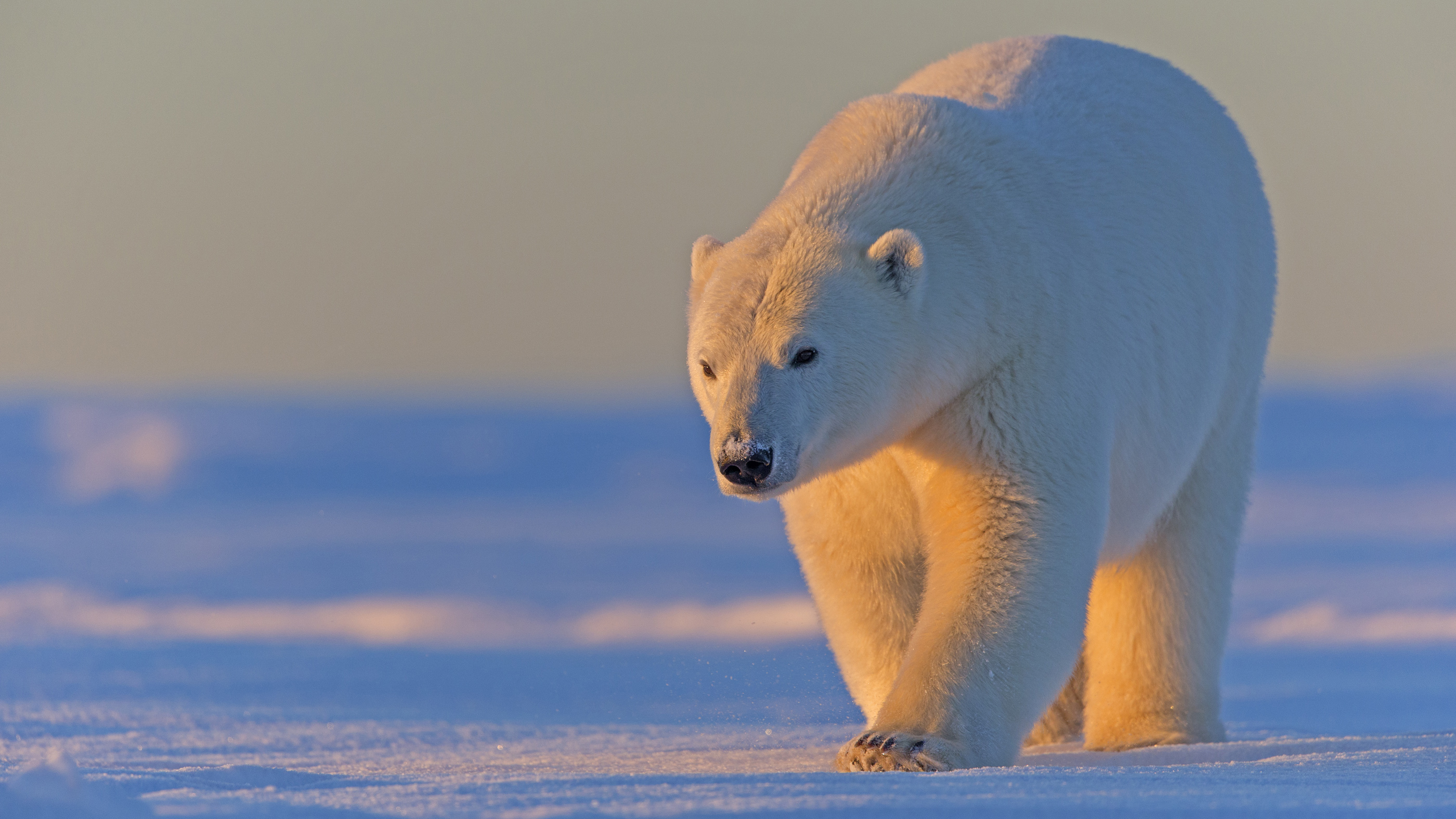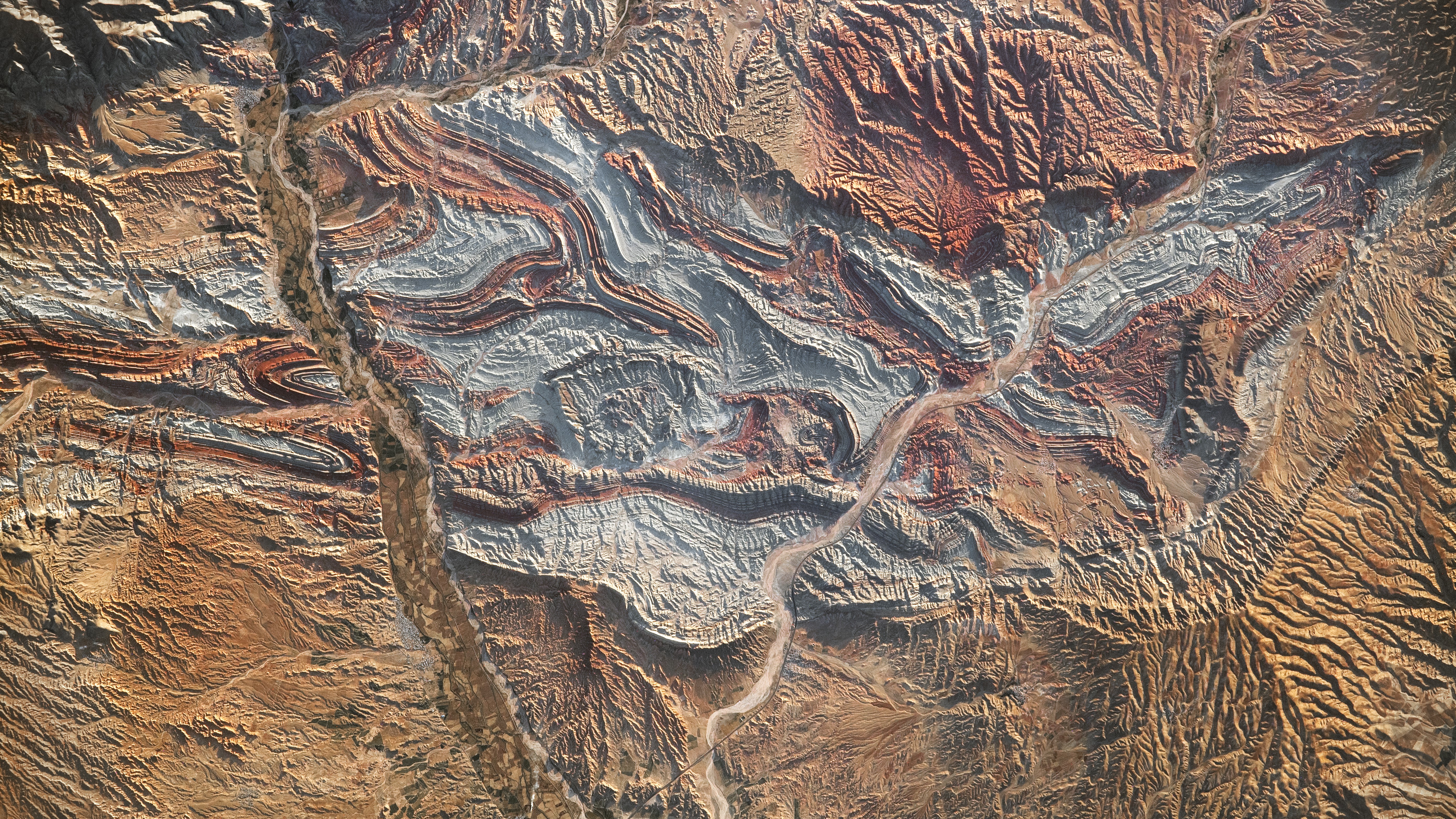Trump administration to approve Arctic wildlife refuge for oil and gas drilling
The refuge is home to polar bears and 135 species of migratory birds.

The Trump administration announced today (Aug. 17) that it plans to open up part of Alaska's Arctic National Wildlife Refuge (ANWR), a 19 million acre (7.7 million hectares) refuge about the size of South Carolina, to oil and gas leasing — a move that paves the way for drilling in the region, according to news reports.
ANWR has long been a battleground between environmentalists and industry. In 1960, the U.S. government began setting aside land for ANWR, "the only conservation system unit that protects, in an undisturbed condition, a complete spectrum of the Arctic ecosystems in North America," according to a 1987 report.
However, while ANWR is home to Arctic animals such as polar bears, caribou, fish and 135 species of migratory birds, it's also rich in oil and gas. In particular, the so-called 1002 Area, a 1.5-million-acre (607,000 hectares) zone located along the refuge's Arctic Ocean coastline, is thought to hold about 10.4 billion barrels of technically recoverable oil, according to a 1998 report by the U.S. Geological Survey. This makes it the largest onshore oil reserve in North America, The New York Times reported.
Related: Why is there so much oil in the Arctic?
U.S. Secretary of the Interior David Bernhardt made the announcement today, saying that the government will likely begin leasing parts of ANWR to oil and gas companies within months, according to Arctic Today. "There certainly could be a lease sale by the end of the year," Bernhardt told reporters during a news conference, as reported by Arctic Today, adding that he would "move forward expeditiously."
Bernhardt said the decision was based on the Republican-passed tax bill in 2017, which mandated that the federal government approve at least two leases of 400,000 acres (162,000 hectares) each by the end of 2024, according to the legislation. In December 2018, the Interior's Bureau of Land Management permitted that drilling could be conducted in the 1002 without harming wildlife, USA Today reported.
Alaskan Gov. Mike Dunleavy (R) and the state's congressional leaders lauded the decision, saying that it would create jobs and help Alaska's economy, Arctic Today reported. That includes potential money for the Inupiat, a group of Alaska Natives who live in Kaktovik, a village of 5,000 to 7,000 people located within the refuge, who often use money from oil revenues to pay for necessities such as schools, infrastructure and health services, Alaska Rep. Don Young (R) wrote in The Hill.
Sign up for the Live Science daily newsletter now
Get the world’s most fascinating discoveries delivered straight to your inbox.
"This is a capstone moment in our decades-long push to allow for the responsible development of a small part of Alaska's 1002 Area," U.S. Sen. Lisa Murkowski (R) said in a statement issued today.
"I thank all Alaskans who have worked for more than 40 years for responsible resource development in the 1002 Area of ANWR," U.S. Sen. Dan Sullivan (R) said in the same statement. "I particularly applaud the tireless advocacy of the many Alaska Natives — who call the area home — and who know firsthand how responsible oil production can provide enormous economic and social benefits while having minimal impact on the environment."
Environmental responses
However, oil and gas extraction can harm the environment, studies show. For instance, as the Exxon Valdez oil spill demonstrated, oil spills can coat the feathers and fur of animals, disrupting their ability to repel water and stay warm, which increases the creature's risk of hypothermia. Oil can also be poisonous if ingested, and it's challenging to clean up, Natalie Boelman, an Earth scientist at Columbia University's Lamont-Doherty Earth Observatory in New York, who has done research in ANWR, told State of the Planet, a blog of Columbia's Earth Institute.
Moreover, companies searching for oil can disrupt the land, driving tractors that rip up vegetation and destroy permafrost, which releases the potent greenhouse gas methane, Boelman noted. Industry can also bring increased traffic, construction and, as a result, noise and dust, that can harm the area. People who drill for oil have no way of detecting and avoiding polar bear dens, so these mammals and their young are also put at risk, The Washington Post reported.
In the past, Democrats have worked to preserve ANWR lands. A congressional deal nearly made it through in 1989, but the Exxon Valdez oil spill upended its momentum, according to The Atlantic. In 1995, then-President Bill Clinton vetoed a budget bill that would have opened the refuge to oil drilling, according to the Oil & Gas Journal. Then, in 2005, the Republican-led Senate tried to open ANWR to drilling, but that movement was stopped by a Democratic filibuster.
In response to today's announcement, environmentalists were quick to say that oil and gas drilling would harm the Arctic's wildlife and ecosystem, and that the move made no sense given today's low oil prices. "Our climate is in crisis, oil prices have cratered, and major banks are pulling out of Arctic financing right and left," Adam Kolton, executive director at Alaska Wilderness League, said in a statement, in reference to Goldman Sachs' December 2019 decision to become the first large U.S. bank to put explicit restrictions on financing for the oil-and-gas industries, especially when it came to protecting ANWR. What's more, Morgan Stanley, Wells Fargo, JP Morgan Chase and Citigroup said they would not finance oil drilling in the 1002 Area.
"And yet the Trump administration continues its race to liquidate our nation's last great wilderness, putting at risk the Indigenous peoples and iconic wildlife that depend on it," Kolton said.
Related: The Alaskan Arctic oil drilling controversy explained (infographic)
However, during the press call, Bernhardt said that potential investors weren't concerned about the region's short-term prospects, but were focused on its long-term potential, according to Arctic Today.
It remains to be seen how the oil and gas industry will affect wildlife in the 1002 Area, which is designated as critical habitat for polar bears under the Endangered Species Act, according to the 1987 report. That report also called the 1002 area "the most biologically productive part of the Arctic Refuge for wildlife," including caribou, musk oxen, wolverines, Arctic foxes, lemmings, gyrfalcons, ptarmigans and marine mammals. Surveys show that the 1002 Area is home to 700 kinds of plants, 47 species of mammals and 42 species of fish, according to the Wildlife Conservation Society.
Originally published on Live Science.

Laura is the archaeology and Life's Little Mysteries editor at Live Science. She also reports on general science, including paleontology. Her work has appeared in The New York Times, Scholastic, Popular Science and Spectrum, a site on autism research. She has won multiple awards from the Society of Professional Journalists and the Washington Newspaper Publishers Association for her reporting at a weekly newspaper near Seattle. Laura holds a bachelor's degree in English literature and psychology from Washington University in St. Louis and a master's degree in science writing from NYU.










